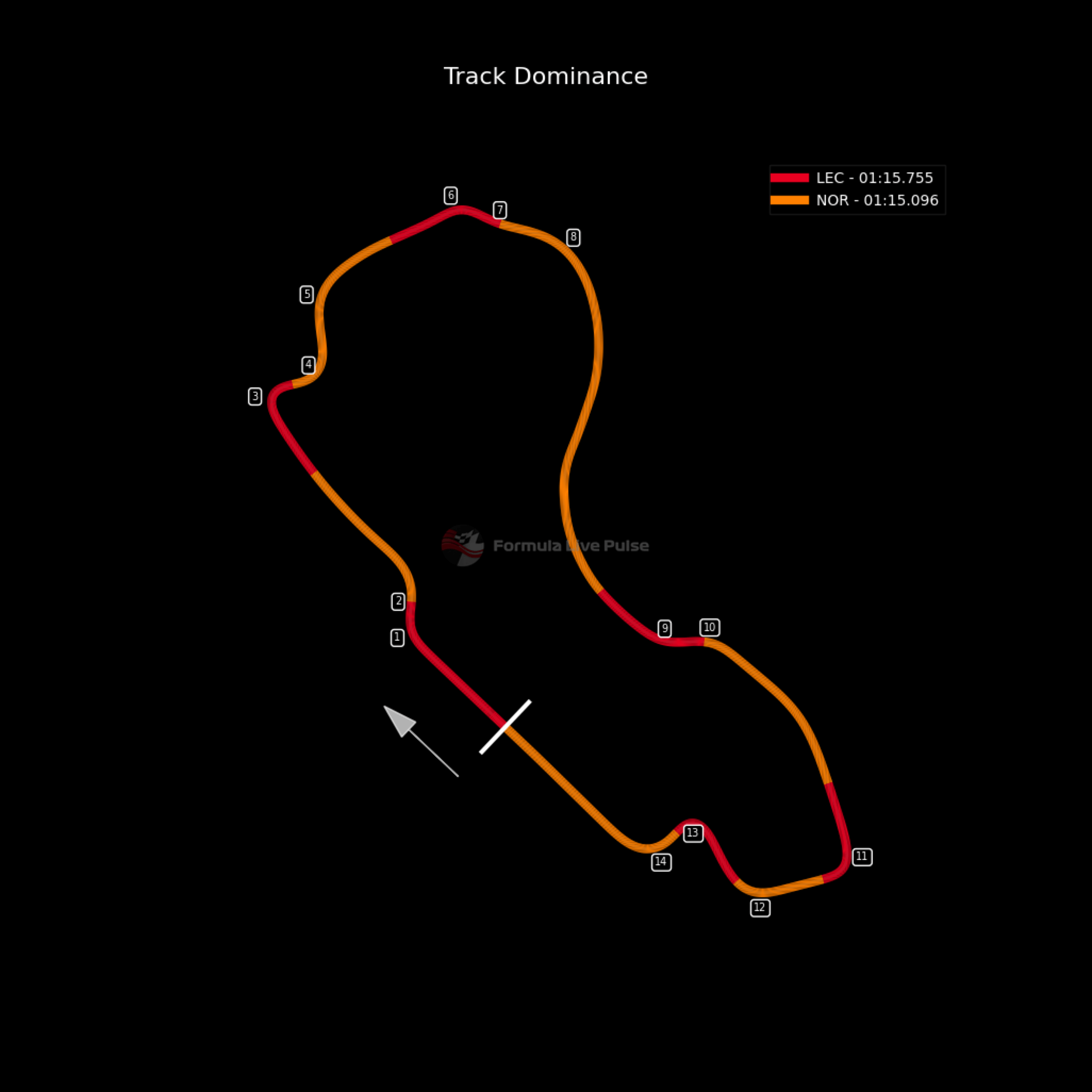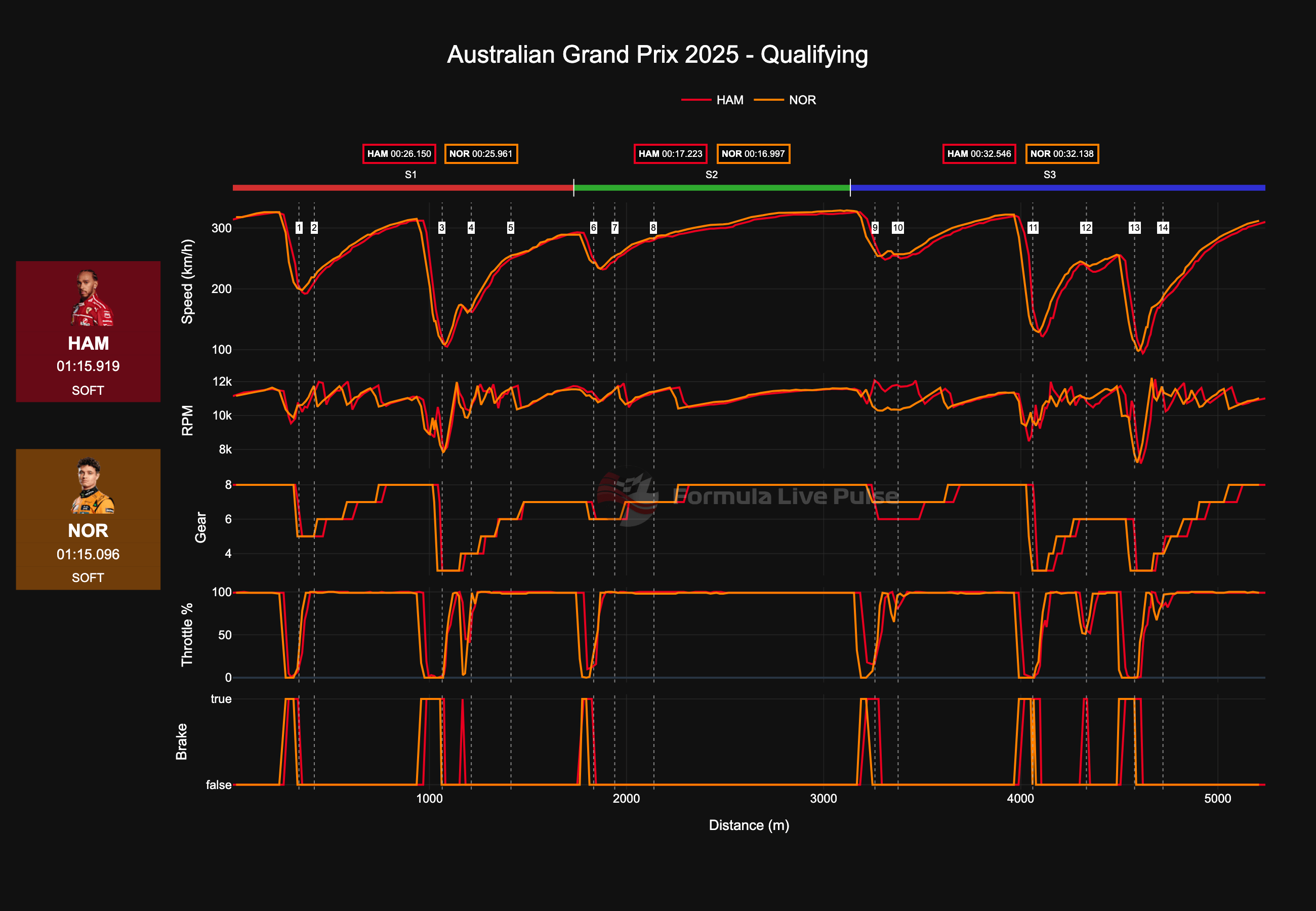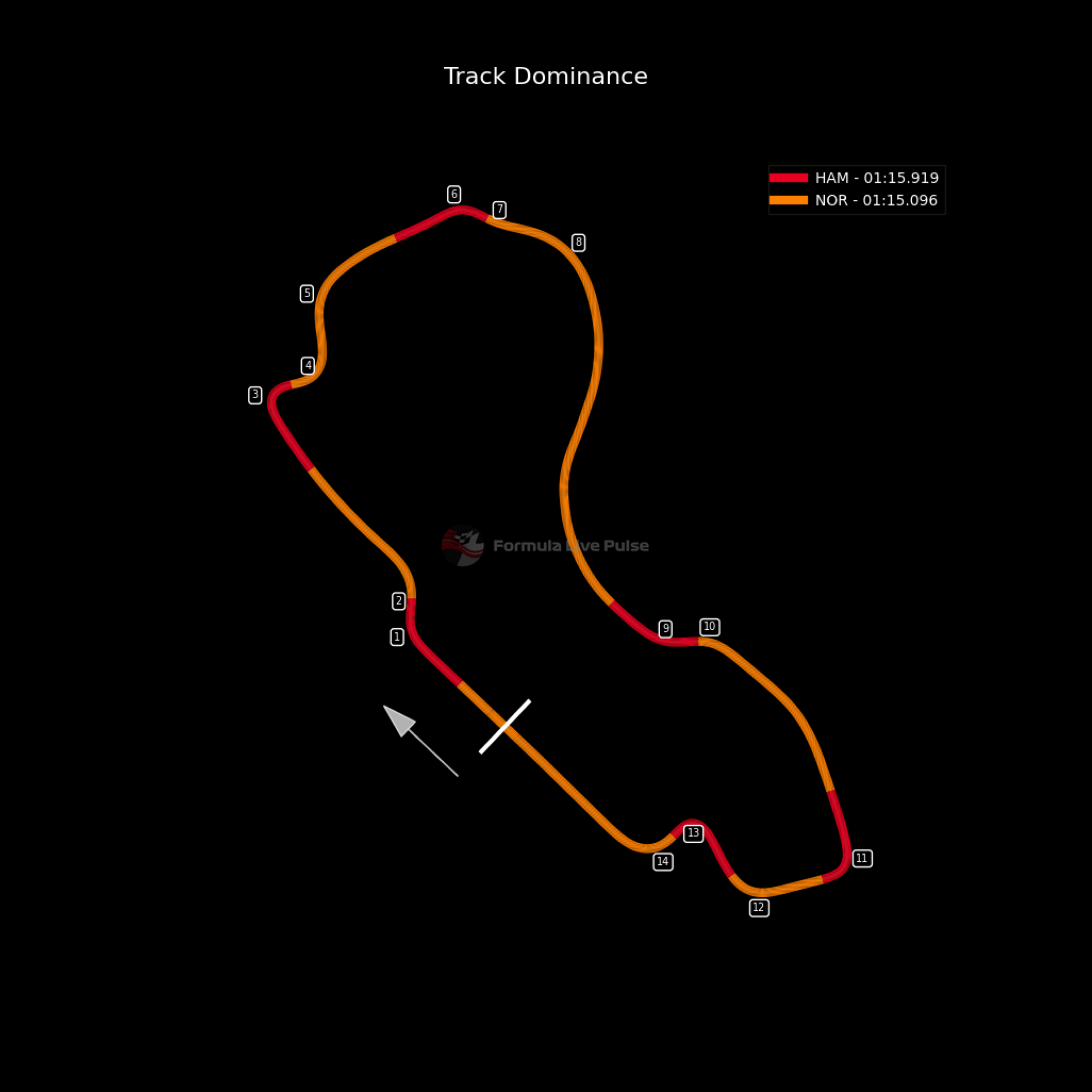
Telemetry Analysis of Norris' Dominant Qualifying Over Leclerc and Hamilton
The 2025 Australian Grand Prix qualifying session delivered a thrilling spectacle as Lando Norris stormed to pole position with a blistering lap time of 1:15.096. The McLaren driver outpaced Ferrari's Charles Leclerc and his former Mercedes rival, Lewis Hamilton, securing a front-row lockout for the papaya-colored cars. But where did Norris gain his advantage, and where did Leclerc and Hamilton falter? Let's break it down from an engineer's perspective.
Norris vs. Leclerc: The Key Differences
From the telemetry data, we can observe distinct performance trends that defined the outcome between Norris and Leclerc. While both drivers utilized the soft compound tires, Norris managed to extract more from his McLaren over a full lap, particularly in Sectors 1 and 2.
Sector 1: The Launch and Early Gains
-
Norris: 25.961s
-
Leclerc: 26.194s
Norris was immediately more confident on throttle application through Turns 1 and 2, carrying higher exit speed compared to Leclerc. The McLaren's superior mechanical grip allowed Norris to get on the power earlier, gaining almost 0.2 seconds by the first split.
One of the crucial aspects was Norris' ability to modulate throttle while maintaining a more stable rear end. Leclerc, in contrast, seemed to struggle with minor oversteer moments, leading to slight corrections that cost him valuable milliseconds.

Sector 2: Where Norris Built His Lead
-
Norris: 16.997s
-
Leclerc: 17.025s
The middle sector is where Norris truly established his supremacy. Through the fast sweeps of Turns 6 through 9, Norris carried more minimum corner speed, likely benefiting from a more balanced car setup. Leclerc appeared to suffer from slight understeer in the high-speed sections, which forced him to hesitate slightly on turn-in.
One of the most notable differences was how Norris used the curbs more effectively, stabilizing the car through better weight transfer. Leclerc, on the other hand, had a more conservative approach, avoiding the aggressive use of curbs, which may have contributed to a less aggressive lap overall.
Sector 3: Minimal Gains, Maximum Impact
-
Norris: 32.138s
-
Leclerc: 32.536s
While the final sector showed the least time difference, it proved to be decisive in sealing Norris' pole position. The McLaren driver was consistently able to brake later and maintain a higher apex speed in the final few corners. Leclerc, in contrast, appeared to struggle slightly with rear-end stability under braking, costing him time in the braking zones.
Overall, Norris finished the lap 0.659s ahead of Leclerc, a considerable margin in modern Formula 1 qualifying.

Norris vs. Hamilton: The Papaya vs. The Prancing Horse
While Hamilton was not Norris' closest rival on the grid, his performance offers another interesting comparison. The seven-time world champion ended the session with a lap time of 1:15.919, placing him eighth and over 0.8 seconds off Norris' time.
Sector 1: Norris' Confidence vs. Hamilton's Hesitation
-
Norris: 25.961s
-
Hamilton: 26.150s
Hamilton's first sector was solid but lacked the sharpness of Norris. While the Ferrari driver braked slightly later, he struggled more with getting back on the throttle early. This hesitation led to a loss of a few tenths early in the lap.

Sector 2: Mid-Corner Speed Tells the Story
-
Norris: 16.997s
-
Hamilton: 17.223s
Through the second sector, Norris was simply more planted. Hamilton's Ferrari appeared to lack the agility of the McLaren, particularly through the high-speed sections where Norris could maintain a tighter line. Hamilton also reported slight understeer, which likely forced him to take a wider approach in key corners, losing further ground.
Sector 3: The Final Blow
-
Norris: 32.138s
-
Hamilton: 32.546s
Hamilton's deficit continued into the final sector, where braking stability played a significant role. Norris had a more predictable car under braking, while Hamilton's Ferrari showed slight instability at key moments. This cost him crucial time in the final chicane leading onto the main straight.

Conclusion: Norris' Masterclass in Melbourne
Norris' pole position at the 2025 Australian Grand Prix was not just about outright pace; it was a masterclass in execution. His ability to extract every ounce of grip from the McLaren, coupled with superior throttle control and braking stability, made the difference against both Leclerc and Hamilton.
Leclerc struggled primarily with high-speed balance and rear-end stability under braking, while Hamilton lacked the precision needed to challenge at the very top. McLaren's setup clearly worked in Norris' favor, making the MCL38 the car to beat.
With rain looming on race day, the battle is far from over. However, based on his qualifying performance, Norris has placed himself in the perfect position to capitalize on any chaos that unfolds.
